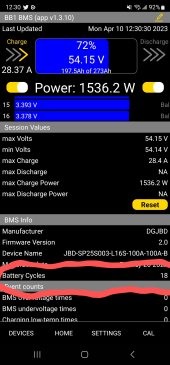Tulex
Solar Wizard
Will be receiving my Sol-Ark 15K shortly. Building 2 304ah batteries.
It seems that hybrid with battery backup is kind of a new concept, or at least not as common. But, that's what I am doing. Could be looked at as a ready to go system if SHTF, enough power to live on, but until then, it's battery backup and to help offset my E bill.
What is the best practice in this type of setup to get the most life out of my batteries? Do they need to be cycled? Regularly or occasionally? Do I want to keep them at a different state of charge than off grid use?
This sort of matters up front before I'm even up and running because I read in the many compression threads that compression necessity depends on how the battery is used. I will go with compression if it will extend my battery, but using the batteries correctly is the first concern.
It seems that hybrid with battery backup is kind of a new concept, or at least not as common. But, that's what I am doing. Could be looked at as a ready to go system if SHTF, enough power to live on, but until then, it's battery backup and to help offset my E bill.
What is the best practice in this type of setup to get the most life out of my batteries? Do they need to be cycled? Regularly or occasionally? Do I want to keep them at a different state of charge than off grid use?
This sort of matters up front before I'm even up and running because I read in the many compression threads that compression necessity depends on how the battery is used. I will go with compression if it will extend my battery, but using the batteries correctly is the first concern.



